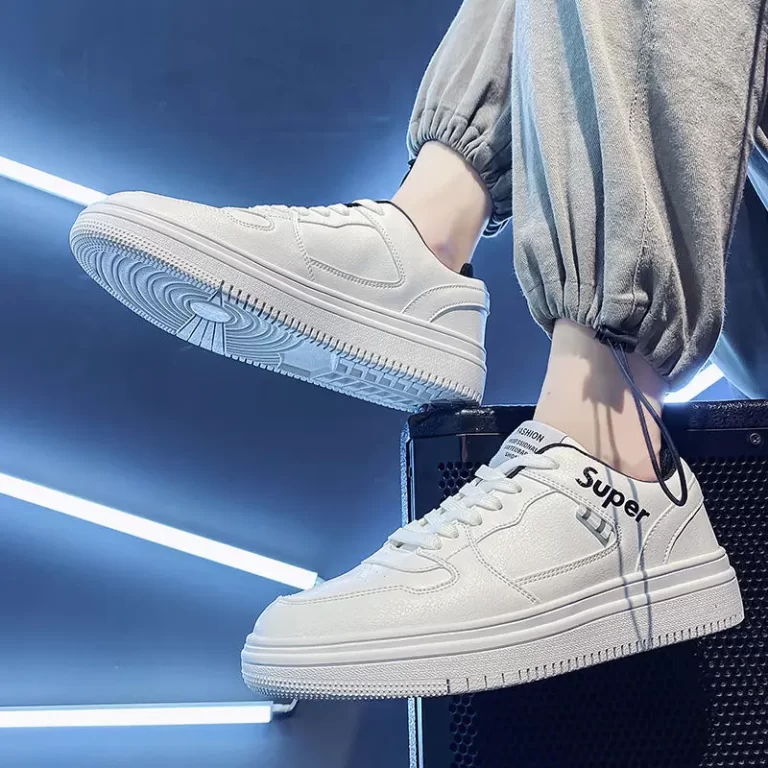
Maximize Your Run: Mileage Limits for Running Shoes
The Lifespan of Running Shoes: What to Expect
Running shoes don’t have a set expiry date. How many miles to put on running shoes?Most experts suggest they last between 300 to 500 miles. However, this range isn’t based on solid research and varies greatly.
Factors that affect shoe lifespan include build quality and usage patterns. Some shoes, like the Nike Air Zoom Alphafly NEXT%, may last over 500 miles. Users’ experiences back this, with reports of multiple marathons run in one pair.
Keep in mind that a shoe’s lifespan depends on the runner’s weight, biomechanics, running surface, and weather. For instance, faster runners with an 8-minute mile pace take fewer steps per mile than those running a 10-minute mile pace. This can lead to different rates of shoe wear.
Moreover, shoe wear isn’t just about miles. Look for wear on the sole, loss of cushioning, and changes in the upper fabric. When shoes lose their bounce or structure, it often means it’s time for a new pair.
Ultimately, it’s about knowing your shoes and how they feel. Track your running shoe mileage to learn your personal patterns. And remember, rotating between multiple running shoes can extend their life and may reduce injury risks.
Understanding the ‘Super Shoe’ Phenomenon
The ‘Super Shoe’ has changed the game for runners. These advanced running shoes are engineered with features like carbon fiber plates and innovative foam technologies, offering runners unprecedented speed and efficiency. One iconic example of this ‘Super Shoe’ category is the Nike Air Zoom Alphafly NEXT%, often praised for its lightness and record-breaking potential. Despite the buzz, misconceptions about their durability exist. Many believe the high-performance benefits of super shoes are limited to the first race. However, experts and user testimonials prove otherwise. Brands like Nike ensure these shoes withstand hundreds of miles while maintaining their benefits.
Understanding the phenomenon involves recognizing these shoes are not just for one-time use. They’re investments designed to sustain extensive mileage, featuring high-quality materials that support repeated use. Yet, like all shoes, they have their mileage limits. The physical signs of wear may not be as immediate, but it’s crucial to acknowledge the impact each run has on their lifespan. Super shoes are likely to last longer than one expects, often well beyond that first marathon finish line. However, keeping track of their usage is still important. Don’t wait for physical deterioration to determine their usability. Be proactive in assessing their condition and performance after each run. The ‘Super Shoe’ phenomenon may seem intimidating, but it offers an opportunity to learn about and leverage advanced footwear technology to one’s advantage.
Factors Influencing the Durability of Your Running Shoes
Various elements can affect how long your running shoes last. Here are some key factors:
- Runner’s Weight: Heavier runners may find their shoes wear out faster due to more force with each step.
- Running Form: Biomechanical factors like pronation and gait can influence which parts of the shoe bear more stress.
- Running Terrain: Running on rough or uneven surfaces can increase shoe wear compared to smooth tracks.
- Climate Conditions: Running in wet or extreme conditions can speed up the breakdown of shoe materials.
- Shoe Materials and Build: High-quality materials tend to endure longer, but they also need care.
- Usage Frequency: The more often you run, the quicker your running shoes may reach their mileage limit.
Always remember that how many miles to put on running shoes isn’t just a number. It’s a balance of these factors. Monitor them closely to get the most out of your footwear.
Recognizing the Signs of Running Shoe Fatigue
Recognizing when your running shoes are nearing the end of their life is crucial for maintaining performance and preventing injury. Here are some signs that indicate it’s time to consider replacing your running shoes:
- Excessive Sole Wear: Check the tread on your shoes. If it’s smooth or you notice uneven wear patterns, it’s a sign they’re worn out.
- Midsole Compression: Look for creases or flattening in the midsole. This can mean the cushioning is no longer effective.
- Altered Fit: If your shoes feel loose or your feet move around more, the structure might be compromised.
- Decreased Comfort: A loss of springiness or increased discomfort during runs often indicates shoe fatigue.
- Persistent Aches and Pains: New or unusual aches after running may be your body’s response to poor shoe support.
How many miles to put on running shoes isn’t strictly about distance. It’s about being aware of these signs. Regularly inspect your shoes, especially after long runs or races. When in doubt, it’s better to replace your shoes too early than too late, to keep your runs safe and enjoyable.

The Impact of Advanced Footwear Technology on Running Performance
Advanced footwear technology has greatly influenced the running world. Innovations like carbon plates and new foam types have reshaped runner’s expectations. Research backs up the performance boosts these tech advancements offer. For instance, studies suggest that times in marathons, half marathons, and 10Ks have improved with advanced shoes. The improvements range from 1.7 to 1.75 percent, a significant margin for competitive runners.
The materials used in these shoes, such as specialized foams and woven uppers, are key factors in durability. These components provide a combination of responsiveness and resilience. The result is not just a quick race day but sustained benefits over many miles. Runners can expect these high-tech shoes to support high performance for an extended period, defying the myth that they are made only for a single event.
One must note that while technology improves performance, it also sets new standards for when to replace running shoes. Upkeep becomes crucial as advanced shoes might not display wear as obviously as traditional ones. Runners need to pay close attention to the subtle signs of compression and loss of responsiveness. An informed assessment after each run ensures that the shoe doesn’t compromise their safety and performance.
Overall, the intersection of advanced technology and running shoes is exciting. It leads to better performances and may extend the lifespan of the shoes when cared for correctly. Remembering these points will help runners decide how many miles to put on running shoes and when it is time for a new pair.
Alternating Shoes: A Strategy for Extended Shoe Life
Running multiple pairs can prolong the life of each. This practice lets you switch between different shoe types. It lessens the wear and tear on a single pair. Shoe rotation keeps cushioning and support at their best longer. You get varied support, reducing your risk of injury. This variety helps your feet and legs adapt to different running conditions. Plus, it allows shoes time to bounce back to their original state. Not all shoes wear out at the same pace.
Using more than one pair can divide the total impact. It’s ideal to have a mix of training and racing shoes. Alternating helps identify which pair suits certain terrains or distances. Remember, how many miles to put on running shoes is not fixed. Mixing pairs adjusts to your unique pattern and extends mileage. Try to use at least two different running shoes for the best results. This will ensure maximum usage and care for your footwear investment.

Caring for Your Running Shoes: Maintenance Tips
To extend the lifespan of your running shoes, proper care is essential. Here are practical maintenance tips that can keep your shoes in good condition while maximizing their performance miles:
- Keep Them Dry: After a run, especially in wet conditions, let your shoes air out. Avoid direct heat which can damage the materials.
- Clean Gently: Remove dirt or mud with a soft brush. For stubborn spots, use mild soap and a damp cloth. Rinse lightly without soaking.
- Avoid Harsh Chemicals: Harsh detergents can break down the shoe’s fabric and cushioning. Stick to simple cleaning solutions.
- Rotate Your Shoes: This gives them time to recover their shape and prolongs their utility.
- Store Properly: Keep shoes in a cool, dry place away from sunlight. Extreme temperatures and UV rays can degrade the materials.
- Use Hands for On/Off: Avoid stepping on the heel to remove your shoes. This breaks down the shoe’s structure over time.
Remember, how many miles to put on running shoes can be influenced by these maintenance practices. Regular care ensures your running shoes remain supportive, comfortable, and durable for as many miles as possible.
When to Say Goodbye: Replacing Your Running Shoes
Knowing when to let go of your trusted running shoes is vital for your running health. It’s not just about hitting a magic mileage number; it’s about being in tune with the signs of wear and listening to your body. Here’s how to tell when it’s time for a new pair:
- Check the Sole: If the tread is worn out, it’s time for a replacement. A smooth sole can lead to slips.
- Feel the Midsole: Press into the midsole. If it feels hard and doesn’t bounce back, the cushioning is shot.
- Examine the Upper: Are there holes or heavy wear on the fabric? This exposes your feet to injury.
- Listen to Your Body: New aches or pain after a run can be your shoes telling you they’re done.
- Count the Miles: While not definitive, surpassing 300 to 500 miles means you should inspect your shoes more closely.
- Consider the Age: Even lightly used shoes lose support over time. If they’re over a year old, consider their condition.
Remember, hanging onto shoes past their prime can do more harm than good. Track how many miles to put on running shoes and be proactive in assessing their condition. If in doubt, consult with a specialist at a running store or consider investing in a new pair. Keep your feet happy, and they’ll keep you running strong.



